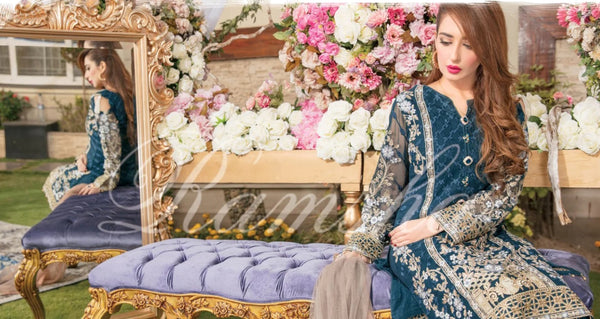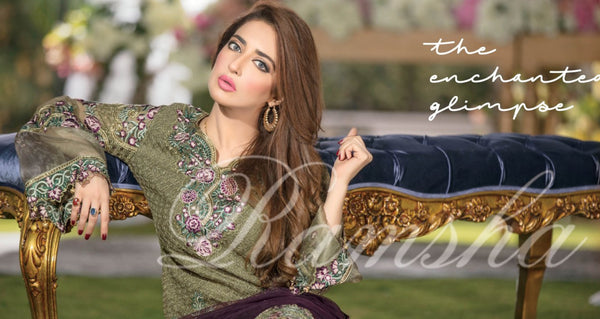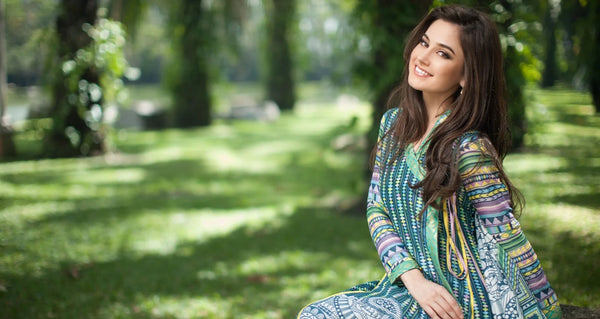How Indian clothing have evolved throughout the centuries
Indian fashion has always been fascinating and intriguing, its clothing shows great diversity and displays phenomenal designs and elegant embroidery.

It truly is a representation of Indian culture and traditions. India is an influential player in the textile market and is known for how well-developed its cotton industry has always been. It’s completely astonishing to find out how far back India’s relation with fashion goes, India’s history of clothing travels back to the 5th millennium BC in the Indus Valley civilization, and has only progressed ever since. Have a look at how Indian dressing has evolved throughout important eras.
INDUS VALLEY CIVILIZATION

“A wool exceeding in beauty and goodness that of sheep”- Herodotus, an Ancient Greek historian.
The Indus Valley civilization was known as the bronze age in regions of South Asia and is the earliest proof of textile being produced in india. The clothing was made out of cotton that was grown locally. During those times, men wore garments made out of loin cloth and women wore wrapped skirts. They made sandals out of wood and cloth and decorated themselves with ornaments and jewellery, they would make moulds for metal and terracotta. Gold jewellery consisted of brooches, head ornaments and large earrings
THE VEDIC ERA

The Vedic era (1500-500BC) is the Bronze Age and the early Iron Age of the history of india, it is also known as the “the heroic age” of ancient Indian civilization. Vedic clothing was simple and effective rather than something that required a lot of stitching. Women wore a form of Ghagra choli where they pleated skirts around their waists and knotted in front, they also wore a style of sari with the most basic draping. Men tend to wore dhotis and lungis, a lower garment known as “paridhana” or “vasana” was fastened with “mekhlana” or “rasana” which would act like a belt. Another classic clothing was the “pravara” which was worn in the winters. The people decorated themselves with jewellery such as finger rings, arm bands, fillets and necklaces.
THE GUPTA PERIOD

The Gupta period (mid-to-late 3rd century CE to 543 CE) was known as the golden age of India. It made immense contributions to countless inventions and discoveries in multiple industries. Stitching became very popular so most of the garments during the Gupta era were sewn and cut. A long sleeved tunic was the costume for the privileged and well-known people. During the Gupta period men would grow out their hair and often wore headgear such as turbans while women wore flowers in their hair. Women wore an “Angharkha” tunic and a heavy skirt tied at the hips known as “Ghagri”, a lot of the clothing was made of muslin, they accompanied that with a lot of jewellery made from gold and ivory such as anklets, head jewellery, large earrings (known as kundana), necklaces and pendants.
THE MUGHAL EMPIRE

The Mughal period (1526-1761) progressed India’s growth and contact with the outside commercial world. The clothes during the Mughal era were luxurious and extravagant, infact, india led the fashion industry during the 16th and 17th centuries.They used various fabrics such as silk, muslin and velvet. The women wore numerous garments that we still wear today such as shalwar, churidar, gharara and farshi and in the winter, they would wear “qabas” which was a coat made out of kashmir shawl cloth. The men wore “Jama”, a long coat shaped like a tunic, and over coats called “chogha”which means “cloak” and “atamsukh” which means “giver of comfort to the soul” the Mughals also started wearing pajamas as a lower garment which we continue to wear to this day. They also wore a turban or “pagdi” as headgear. The Mughals were extremely fond of jewellery and wore jewelled turbans, head-jewellery, bangles, large earrings, bold rings, arm bands and nose rings.
BRITISH RAJ

The British raj (1858-1947) is the period when the British ruled over the Indian subcontinent. The British raj ended up having a major western influence on Indian clothing. The culture of wearing blouses came from the British, women wore Indian sarees, but with foreign blouses and petticoats. The men started wearing formal trousers and suits made from linen and wool, they also wore an upper garment called “Angarkha” which overlaps and is tied to the left or right shoulder. The British raj also helped in the development of the material “khadi” which is a natural woven fibre which helped lesson our dependency on British textiles and goods.
21st Century Fashion

Over the years, Indian fashion has developed and progressed according to trends.It has been exposed to various new materials which help come up with new and unique ideas. Ethnic wear such as sarees, salwar kameez and lehenga are better than ever as new ideas are implemented to glamorize traditional Indian clothing and progress into the world of fashion. Indian clothing has become more vibrant and colorful, Designers learnt how to combine both ethic and western fashion together to create a fushion of both styles, This is also known as contemporary clothing. Indian fashion is especially highlighted in Bollywood, weddings and other flamboyant events. Several fashion designers are now famous international names such as Manish Malhotra, Sabyasachi, Ritu Kumar, Rohit bal and Tarun Tahiliani.
To conclude, Indian fashion has evolved immensely throughout the years and has progressed into a classy and stylish industry. Indians have worn their culture with pride throughout centuries, the people of india have developed along with its fashion industry which has flourished into something incredible in the modern era and continues to do so.
Author ~ NOYA K.
Noya, born in Dubai and currently studying in Sydney - Australia, is an aspiring blogger with a passion for writing about fashion, arts and culture.






